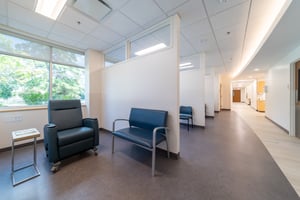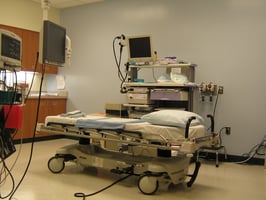Advances in interventional pain medicine have revolutionized the ability to manage and alleviate...
10 Keys: The Importance of Good Design in Ambulatory Healthcare Facilities
While there are numerous things that contribute to creating a successful ambulatory healthcare facility, good architecture and design are critical. Here are 10 ways design makes an impact on the quality of healthcare environments.
1. Efficiency: Efficient layouts and workflows can reduce staff fatigue, minimize patient wait times, and lower both construction and operational costs. Well-designed facilities help staff focus on delivering care rather than navigating logistical challenges.
2. Patient and Staff Experience: A well-designed facility not only creates a comfortable, inviting, and calming environment for patients, reducing their anxiety and stress during their visit, but it also significantly enhances the working environment for staff. This, in turn, positively impacts patient satisfaction and outcomes while promoting staff well-being and job satisfaction.
3. Infection Control: Proper design of elements, such as ventilation, room pressurization, spatial separation, and adequate hand hygiene stations, are critical in preventing the spread of infections in healthcare settings. A well-designed facility supports infection control measures.
4. Privacy and Confidentiality: Patient privacy is of utmost importance in healthcare. Thoughtful acoustical and visual separations in design ensures that confidentiality and dignity are maintained during care, fostering trust and compliance.
5. Regulatory Compliance: Healthcare facilities must adhere to a range of regulations and standards, from accessibility requirements to life safety codes. Architectural design must seamlessly integrate these compliance obligations.
6. Safety and Emergency Response: Facilities need to be designed with safety and emergency response in mind, ensuring the well-being of patients and staff during crises or disasters.
7. Technology Integration: Modern healthcare relies heavily on advanced technologies, including specialized medical equipment, data handling, digital imaging, electronic health records, and access controls, to name a few. The effective integration of these elements in design improves care delivery, communication, and effective documentation.
8. Sustainability: Sustainable design practices, such as energy-efficient systems and eco-friendly materials, reduce a facility's environmental impact and operational costs over time.
9. Flexibility and Adaptability: Designing with flexibility in mind allows facilities to adapt to changing healthcare needs, new technologies, and evolving care models without significant structural changes.
10. Branding and Reputation: The physical environment of a healthcare facility plays a role in shaping its brand and reputation. A well-designed facility can project a commitment to quality care and enhance its standing in the community.
Good architectural design is integral to the success of ambulatory healthcare facilities. It not only enhances the efficient and safe delivery of care but also contributes to the overall patient and staff experience, assures regulatory compliance, and elevates the reputation of the facility within the community. We invite you to visit our website, www.hsarchitecture.com, for many examples of design in the ambulatory healthcare setting.



